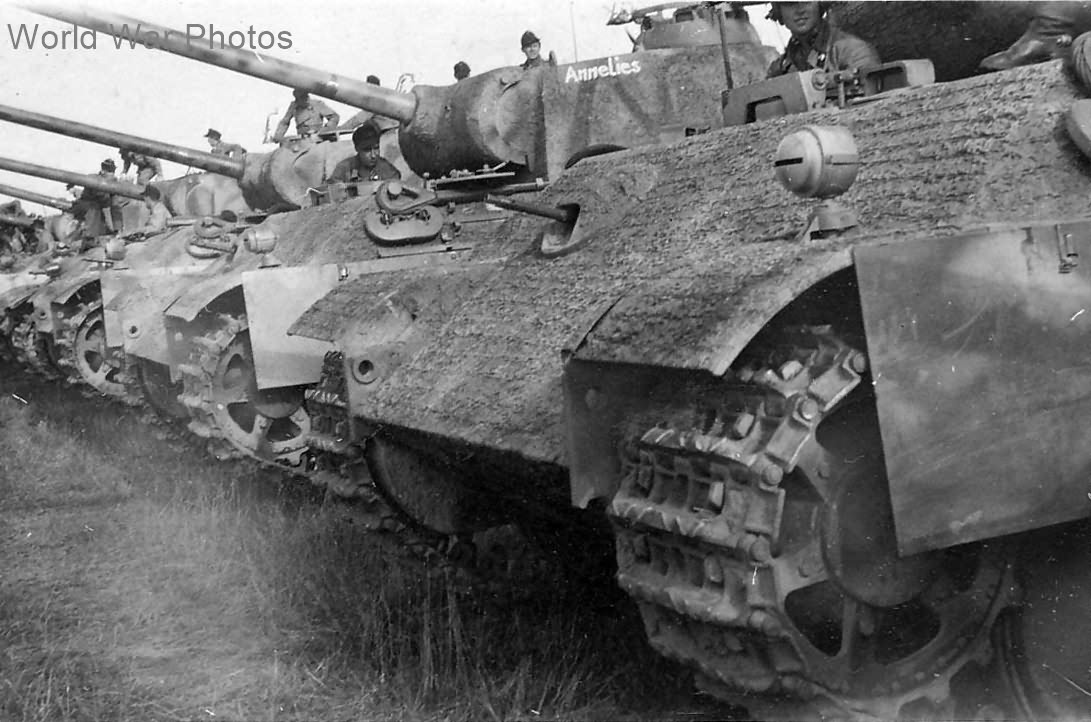The 116th Panzer Division, also known as the “Windhund Division” (Greyhound Division), was formed in April 1944 by converting the 16th Panzergrenadier Division. The division’s combat history was concentrated on the Western Front, particularly during the last year of World War II.
Formation and Structure
The 116th Panzer Division was established from the remnants of the 16th Panzergrenadier Division, which had suffered heavy losses at Uman in Ukraine, and elements of the 179th Reserve Panzer Division. Its core components included:
- Panzer Regiment 16 (two battalions),
- Panzergrenadier Regiment 60 (two battalions),
- Panzergrenadier Regiment 156 (two battalions),
- Panzer Artillerie Regiment 146 (three battalions),
- Heeres Flak Abteilung 281 (anti-aircraft),
- Panzerjäger Abteilung 228 (anti-tank),
- Panzer Aufklärungs Abteilung 116 (reconnaissance),
- Nachrichten Abteilung 228 (signals),
- Panzer Pioniere Bataillon 675 (engineers).
Combat History
Normandy Campaign (June – August 1944):
- The division first saw action during the Normandy Campaign following the D-Day landings in June 1944. It was involved in fierce battles as the German forces tried to resist the Allied breakout from the beachhead.
- By the end of August 1944, after suffering significant losses during the withdrawal from France, the division was pulled back for re-fitting in Dusseldorf in September.
Battle of Aachen (September – October 1944):
- After re-fitting, the 116th Panzer Division was moved to the Cologne (Köln) area and participated in defensive operations near Aachen. In October 1944, it fought in the Hürtgen Forest as part of the German defensive effort to delay the Allied advance into Germany.
Ardennes Offensive (Battle of the Bulge, December 1944):
- The division participated in the Battle of the Bulge, specifically in the southern sector of the Ardennes Offensive, beginning in December 1944. Here, it engaged American forces in a desperate attempt to turn the tide of the war, but like most German units, it suffered heavy casualties and was forced to withdraw by January 1945.
Defense of the Rhine (January – February 1945):
- In January 1945, the division was moved to the Kleve sector on the Rhine River, playing a role in defending Germany’s western border against advancing Allied forces.
Ruhr Pocket (April 1945):
- By April 1945, the division, along with other remnants of the Wehrmacht, was encircled in the Ruhr Pocket by American forces. The encirclement resulted in the division’s eventual surrender, marking the end of its involvement in the war.
Organizational Changes
The division underwent several significant reorganizations during its short existence, including the absorption of additional units:
- Panzer Brigade 108 was integrated into the division in October 1944, after the heavy losses suffered in Normandy.
- Various Luftwaffe Fortress Battalions (Lw.Fest.Btle.) XII and XIX were used to bolster the division during its re-fitting in the Eifel.
Final Structure (1945)
By the end of the war, the 116th Panzer Division had the following structure:
- Panzer Aufklärungs Abteilung 116 (reconnaissance),
- Panzer Regiment 16 (two battalions),
- Panzergrenadier Regiment 60 (two battalions),
- Panzergrenadier Regiment 156 (two battalions),
- Panzer Artillerie Regiment 146 (three battalions),
- Heeres Flak Abteilung 281 (anti-aircraft),
- Panzerjäger Abteilung 228 (anti-tank),
- Nachrichten Abteilung 228 (signals),
- Panzer Pioniere Bataillon 675 (engineers).
Key Engagements and Subordination:
- June – August 1944: Western France (Normandy), under II SS Panzer Corps, 5th Panzer Army.
- September – October 1944: Aachen, under 7th Army.
- December 1944 – January 1945: Ardennes, under 5th Panzer Army.
- February – March 1945: Rhine defenses, under 1st Fallschirmjäger Army.
- April 1945: Ruhr Pocket, under Lüttwitz’s command.
The 116th Panzer Division, while relatively short-lived, fought in some of the most crucial battles of the late war on the Western Front, often facing overwhelming odds as the Allies advanced deeper into Germany. The division’s final surrender in the Ruhr in April 1945 marked its end alongside many other Wehrmacht formations.
